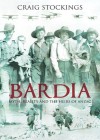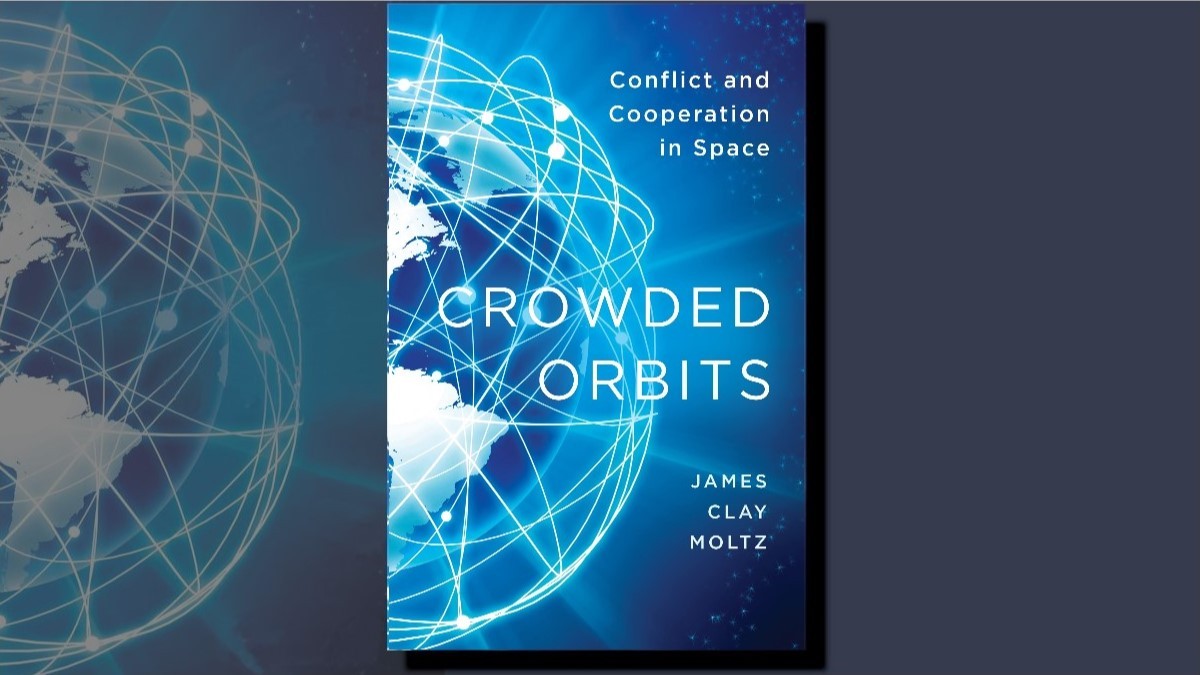Review Essay - Bardia: Myth, Reality and the Heirs of ANZAC
Bardia: Myth, reality and the heirs of ANZAC
Written by: Craig Stockings,
UNSW Press, Sydney, 2009,
ISBN: 1921410256, 496 Pages.
Abstract
On 3 January 1941, Australian soldiers led an assault against the Italian colonial fortress town of Bardia. Two days later, after fifty-five hours of heavy fighting, the position fell to the Australians in a resounding victory. At a cost of 130 killed and 326 wounded, the Australians captured around 40,000 Italian prisoners and large quantities of arms and equipment. The success at Bardia was considered to be one of the greatest military feats in Australian history. But despite both the scale and significance of this monumental success, the Battle of Bardia has been largely neglected by historians and is not well known to Australians.
The capture of Bardia in North Africa by the Australian 6th Division should be remembered as one of Australia’s finest military achievements. Sixteen thousand untried Australian infantry, supported by artillery and a small number of British tanks, decisively defeated approximately 40,000 Italians holding a strongly fortified position, with a loss of only 129 killed and 329 wounded. For a short period in January 1941, Bardia was probably as well known to Australians as Gallipoli, Mont St Quentin and other feats of Australian arms. Today, however, few Australians have heard of Bardia.
Craig Stockings, Senior Lecturer in History at the Australian Defence Force Academy, has written Bardia: Myth, reality and the heirs of ANZAC with the dual purpose of shining a brighter light on this largely forgotten battle, while also examining in detail why the Australians were so successful. Stockings’ ADFA web page notes that his primary areas of interest are ‘operational analysis and uncovering the battlefield “truth” too often obscured by the distorting effect of Anzac mythology’. This book sits squarely in both of those areas; although it could be asked how a forgotten battle can be obscured by the distorting effect of Anzac mythology.
Bardia is divided into three parts; ‘The Setting’, ‘The Battle’ and ‘The Explanation’. The first part, ‘The Setting’, is the lightest part of the book and is a relatively quick skim through the circumstances that led Australians to attack Italians in North Africa. This includes a short summary of the historical circumstances leading to the Second World War, the raising and training of the Australian 6th Division, the opening movements in North Africa and a description of fortress Bardia itself. It closes with a chapter on planning the Bardia assault: of interest because Australian officers planned the attack. Despite containing little new research, it is well packaged, informative and readable.
In this opening part, Stockings notes that ‘a significant proportion of 6 Division’s recruits, probably more than in subsequent formations, held the Anzac tradition and their potential involvement with it in respectful awe’. While my grandfather, who served in the 8th Division, may disagree with Stockings’ comment on the greater influence of the Anzac tradition on the 6th Division, the motivating power of the Anzac legend (or myth) is an important theme in Australia’s military history and Stockings is right to discuss its influence at Bardia. However, this also introduces my one real gripe with the book: Stockings is at such pains to debunk ‘myths of Australian invincibility’, which he blames on the Anzac myth, that he deliberately, or otherwise, downplays the motivational power of this Anzac heritage. Napoleon allegedly said that ‘the morale is to the materiel as three is to one’ and the motivating influence of Anzac on 6th Division soldiers should not be disregarded. I will return to this theme later.
The second part of the book offers a detailed description of the battle for Bardia. Well researched and written, Stockings captures the battlefield manoeuvres, the quality of senior and junior leadership, decisive actions at key moments, fluctuations in fortune and the occasional moments of individual bravery that influenced the outcome of the battle (although that outcome appears to never have been in serious doubt). Stockings’ comments on the attack against Post 11 by Lieutenant Colonel Godfrey’s 2/6th Battalion are probably the most contentious section. Stockings has separately written an article on this topic for the Australian Army Journal, titled ‘Deadly Pride and the Infamous Case of “Post 11”‘.1 Anyone who has read that article will not be surprised by the arguments in Bardia. Stockings blames Godfrey’s poor judgment and leadership for turning a diversionary attack into an unnecessary frontal assault, which resulted in the deaths of sixty-four Australians and the wounding of many more, for no operational value. In ‘Deadly Pride’, Stockings reveals his low opinion of the Anzac heritage by commenting acerbically that ‘true to the Anzac tradition, the ill-fated attack on Post 11 was quickly transformed from a low point of command and tactical failure to representing a high point of Australian fighting spirit’. Anzac has always been an easy target for those who want to criticise the ‘defeat into victory’ mythos. Of course, this observation does not provide a defence for Godfrey; Stockings mounts a strong case against both him and his brigade commander, Brigadier Savige.
Stockings notes in his introduction that the third part of Bardia, titled ‘The Explanation’, ‘is the most important part’. Here, he provides his answers as to ‘why the Australians were so successful beyond time-honoured Anzac mythology or ethnic slurs against the Italian enemy’. This is a fascinating section, even if one does not agree with all of Stockings’ assertions. Seeking to look beyond what he calls ‘the obscuring effect of Anzac mythology’, Stockings examines a number of factual explanations that would have predicted that the Australian attack would be successful, even before they crossed the line of departure.
This part opens with a chapter titled ‘Time-Honoured Nonsense’, in which Stockings gives free-rein to his attack on the Anzac legend, particularly criticising the suggestion that somehow the soldiers of the 6th Division were innately superior to the Italians, simply by virtue of being Australian. ‘For too many authors’, Stockings writes, ‘brawny, sun-tanned Australian infantrymen found success because they were brawny, sun-tanned Australian infantrymen’. He snipes at Peter Fitzsimons (why is it that so many academics seem jealous of Fitzsimons’ literary success?) and catalogues others who have allegedly fostered the myth of Australian invincibility set against Italian cowardice and innate military ineffectiveness. Not surprisingly, he ignores authors who do not fit his agenda. The 1995 The Oxford Companion to Australian Military History2 notes that during the First Libyan Campaign, during which Bardia took place, ‘the Italian army fought hard and well... [but] suffered from equipment and leadership deficiencies while operating at the end of a long and vulnerable supply line...’. Similarly, Glenn Wahlert’s The Western Desert Campaign 1940–41,3 published in 2006, observes that ‘certainly Bardia was not the walkover many have come to think. In the first few hours the Italian defenders put up a staunch and aggressive resistance...’.
None of this is to say that Stockings’ research is not thorough (a 16-page bibliography is hard to argue with), but rather that this is a book written with an agenda and should be recognised as such, up front, by any prospective reader. (But, of course, let he without an agenda cast the first stone!)
So to what does Stockings attribute such a decisive victory? Logistics, equipment and leadership provide the simple answer, and in the concluding chapters of Bardia, Stockings looks at each of these in detail. Here, his qualities as a historian come to the fore. Meticulously researched, factually documented and well argued, these are compelling chapters. Chapter twenty, titled ‘Something is wrong with our army...’ is Stockings’ attempt to explain the largely abysmal battlefield performance of the Italians, while avoiding ethnocentric stereotypes, particularly allegations that the Italians lacked an aptitude for battle. He identifies the poor standard of Italian military training and non-existent battle field indoctrination and contrasts this with the high standard of both available to the Australians (again, the 8th Division might disagree). Quite rightly he points out that this led to ‘a wide gap with respect to basic tactical proficiency’ between the two opponents at Bardia.
Similarly, the Australians enjoyed superior military intelligence, which gave them a detailed understanding of Bardia’s defences when planning their attack. Again, this is well covered by Stockings (but it does remind one that there is a good book yet to be written on Australian military intelligence in the Second World War).
Stockings saves a couple of pages at the end of the book to briefly discuss the issue of morale. Clearly not a proponent of Napoleon’s three-to-one axiom, Stockings argues that morale in the military context is both misunderstood and, by implication, a grossly over-valued commodity. His view is that morale is ‘as much an effect as it is a cause’ and merely represents the sum of the various factors— training, equipment, logistics, intelligence and so on—that exist within a military formation. Compared with the well-researched and convincingly argued earlier chapters, Stockings’ discussion of morale is extremely thin for a military historian.
He may not give much credence to morale as a combat multiplier, but he ignores a vast library of military history that suggests otherwise.
By downplaying morale as a factor, Stockings is able to downplay the impact of the Anzac legend on the men of the 6th Division. While he is surely correct in observing that the Bardia victory was not achieved through some unbeatable Australian predisposition for war, my view is that this invincible stereotype is not key to the Anzac legend, or to the influence it has had on successive generations of Australian soldiers.
For the Australian Army, the Anzac legend has not been evidence that every Australian soldier is an invincible warrior, but rather it has offered an ideal to live up to. Anzac has provided both a benchmark for performance and a source of motivation, guiding inexperienced Australians who face combat for the first time. Gavin Long notes in his 1973 work, The Six Years War: Australia in the 1939–45 War,4 that ‘to many Australians, as diaries and letters revealed, this battle [Bardia] had been a test of their equality with the men of the old A.I.F. and they felt they had passed the test’. The former Chief of Army, Lieutenant General Peter Leahy acknowledged the importance of the Army’s Anzac heritage with his ‘I am an Australian Soldier’ initiative. The nine core behaviours were certainly not unique to Australian soldiers, but they tapped into an Anzac heritage that the Australian Army is proud to be a part of. It is easy to mock the Anzac legend and poke holes in the myths (for instance, few soldiers were true heroes at Gallipoli) but it continues to motivate Australian soldiers in Timor-Leste, Iraq and Afghanistan, just as it did for those at Bardia. Overstating the legend should be avoided, but so should an underestimation of both its import and value.
Overall, Bardia: Myth, Reality and the Heirs of ANZAC is a worthy addition to any library and definitely worth a read. Stockings has set out to prod a few sacred cows and I can attest that he has succeeded. However, while a reader may not agree with everything in this book, they will certainly come away better informed about a defining moment in Australia’s proud military history.
Endnotes
1 Craig Stockings, ‘Deadly Pride and the Infamous Case of “Post 11” ‘, Australian Army Journal, Vol. VI, No. 2, Winter 2009.
2 The Oxford Companion to Australian Military History, edited by Peter Dennis, Jeffery Grey, Ewan Morris, Robin Prior and John Connor (a reasonable selection of military historians, by any measure), Oxford University Press, Melbourne, 1995.
3 Glenn Wahlert, The Western Desert Campaign 1940–41, Army History Unit, Canberra, 2006.
4 Gavin Long, The Six Years War: Australia in the 1939–45 War, Australian War Memorial and the Australian Government Publishing Service, Canberra, 1973.



